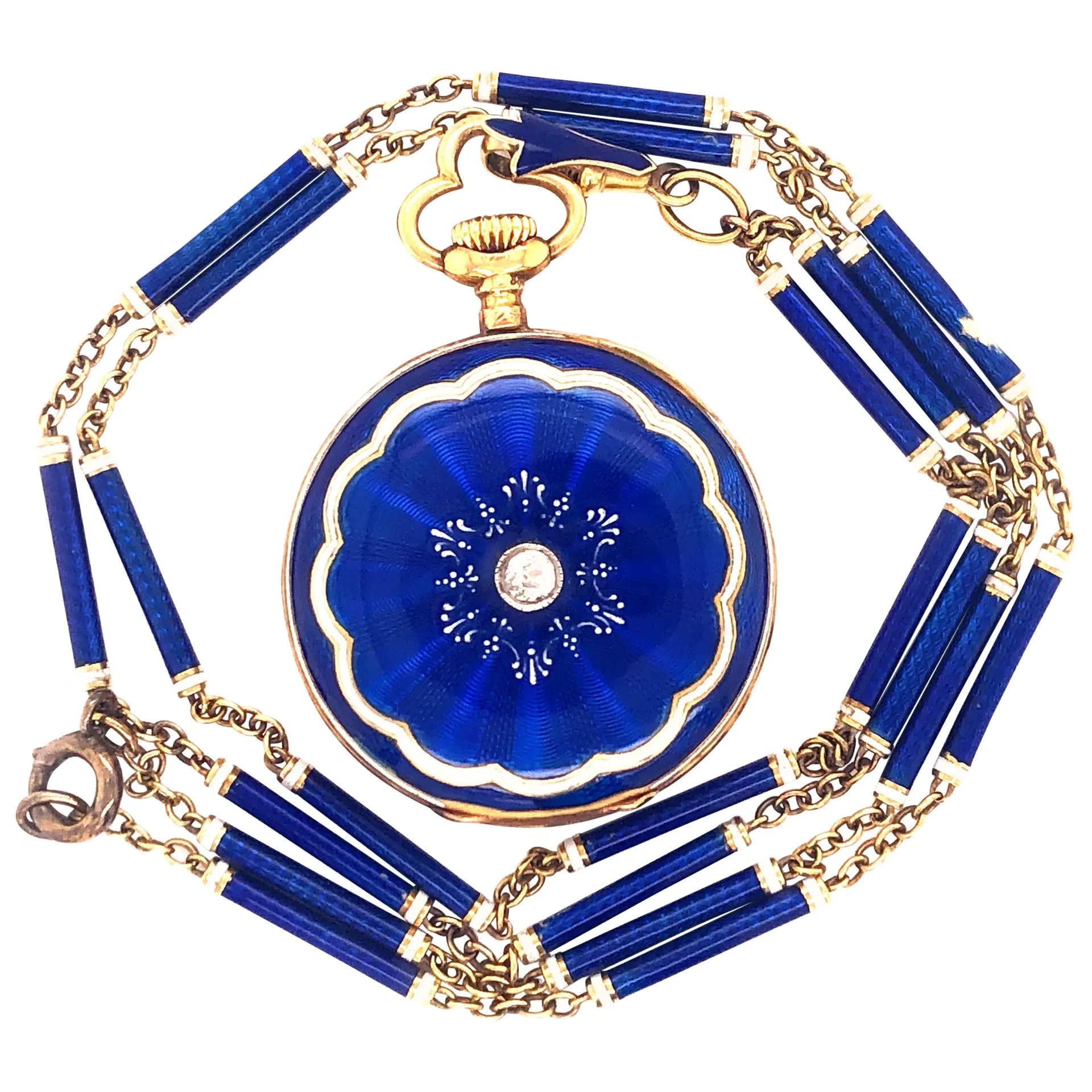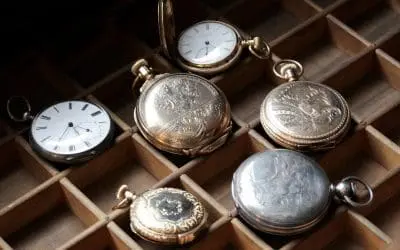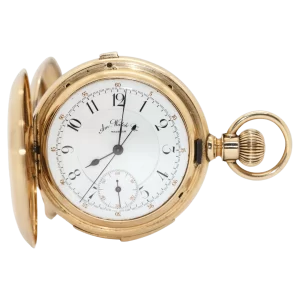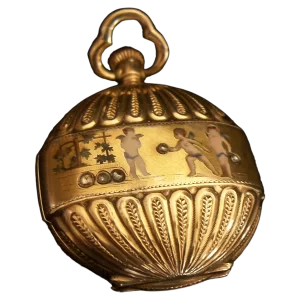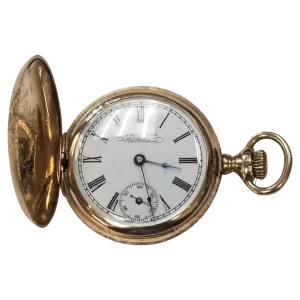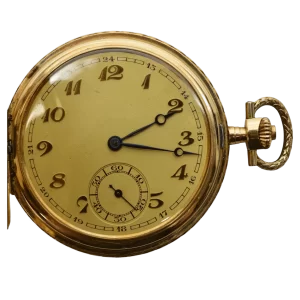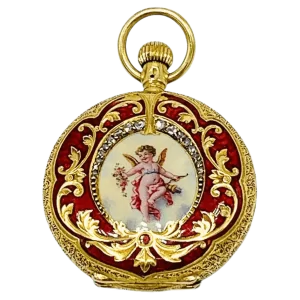The intricate designs and delicate beauty of antique pocket watches have captivated collectors and enthusiasts for centuries. While the mechanisms and timekeeping capabilities of these timepieces are certainly impressive, it is often the ornate and decorative cases that truly catch the eye. Among the many techniques used to adorn these cases, Guilloché (pronounced gee-yoh-shay) stands out as a true masterpiece of art and craftsmanship. This traditional decorative technique involves intricate engraving and intricate patterns, creating a mesmerizing effect that enhances the overall beauty of a pocket watch. In this article, we will explore the history and technique of Guilloché on antique pocket watch cases, as well as the role it plays in the valuation and appreciation of these highly sought-after timepieces. From the origins of this intricate art form to its modern-day applications, we will delve into the world of Guilloché and discover the skill, precision, and creative vision required to create these stunning masterpieces. Whether you are a seasoned collector or simply intrigued by the art of horology, join us as we unravel the secrets of Guilloché on antique pocket watch cases.

Historical origins of guilloché patterns
Guilloché patterns have a rich historical background that dates back several centuries. The technique itself can be traced back to the 16th century, where it was initially developed in France for the production of intricate metalwork. However, it wasn’t until the 18th century that guilloché patterns became prominently associated with luxury timepieces. The Swiss watchmaking industry adopted this decorative technique, using it to embellish the cases of pocket watches. The intricate and precise nature of guilloché patterns quickly became synonymous with craftsmanship and elegance, making it a sought-after feature among collectors and connoisseurs of fine timepieces. Over the years, the art of guilloché has evolved, incorporating various styles and techniques, but its historical origins remain an integral part of the allure and charm of antique pocket watch cases.
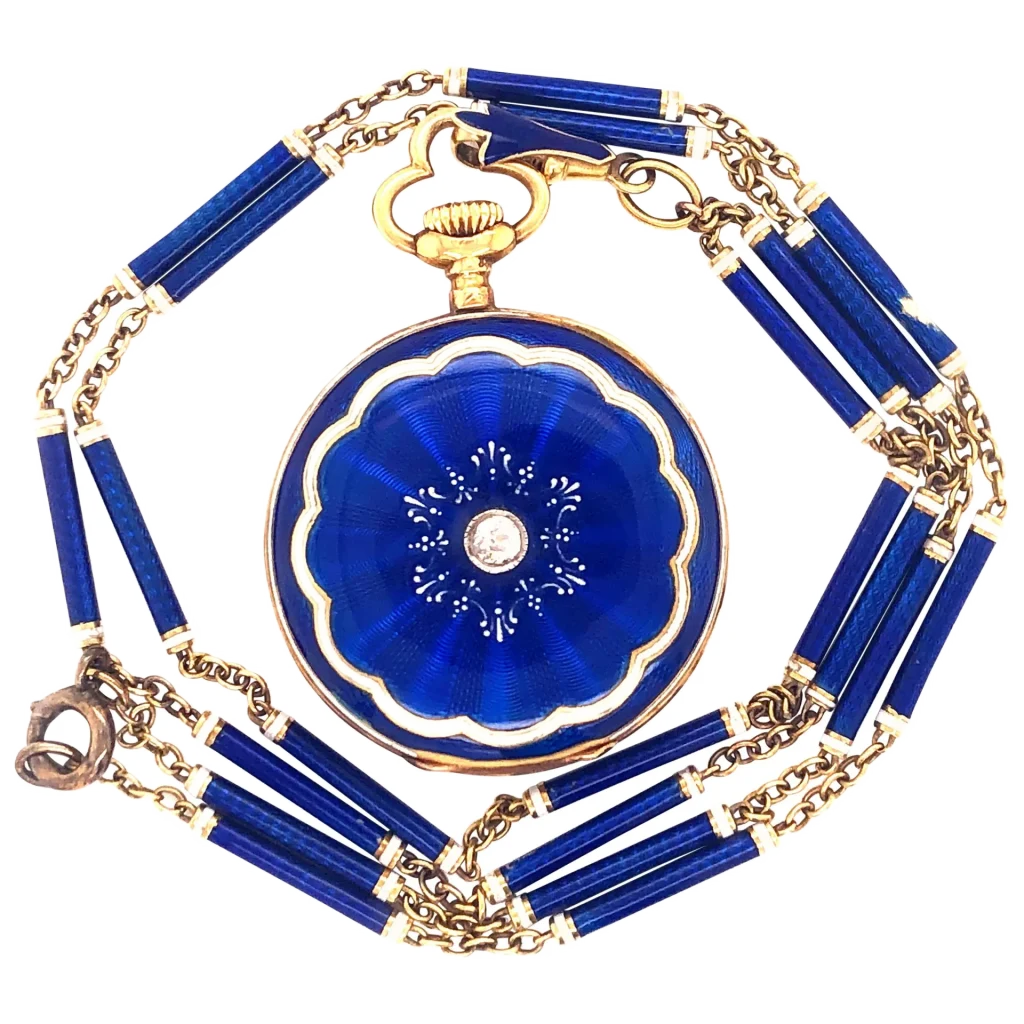
Hand-crafted precision and detail
The exquisite beauty of antique pocket watch cases lies in the hand-crafted precision and attention to detail that goes into their creation. Skilled artisans meticulously engraved guilloché patterns onto these cases, using specialized tools and techniques that have been passed down through generations. Each stroke of the engraving tool is carefully executed to create intricate patterns that reflect the mastery of the craftsman. The precision required to achieve perfect symmetry and flawless lines is a testament to the dedication and skill of these artisans. The level of detail found in guilloché patterns is unparalleled, with tiny motifs and textures that capture the light and create a mesmerizing visual effect. It is this meticulous craftsmanship that elevates antique pocket watch cases to objects of timeless beauty, showcasing the extraordinary artistry and excellence in watchmaking history.

Intricate designs on metal surfaces
The art of intricate designs on metal surfaces is a testament to the craftsmanship and creativity of skilled artisans. These designs, often seen on various metal objects, including antique pocket watch cases, enhance their aesthetic appeal and create a sense of timeless elegance. By meticulously etching, engraving, or embossing patterns onto metal surfaces, artisans bring to life intricate motifs, geometric shapes, and ornate textures. The level of precision and attention to detail required to create these designs is remarkable, as every line and curve must be flawlessly executed. The result is a captivating visual experience that showcases the mastery of the artisan and adds a touch of sophistication to the metal surface. Whether it is the delicate filigree work or the mesmerizing guilloché patterns, the artistry of intricate designs on metal surfaces adds depth and character to the objects they adorn, leaving a lasting impression on the beholder.
Utilizing a rose engine lathe
Utilizing a rose engine lathe is a fundamental tool in the process of creating intricate guilloché patterns on antique pocket watch cases. This mechanical device, consisting of a rotating spindle and a series of gears and cams, allows artisans to produce repetitive and precise geometric designs with remarkable accuracy. By carefully adjusting the settings and manipulating the hand-operated controls, artisans can control the depth, spacing, and curvature of the patterns, resulting in stunning visual effects on the metal surface. The rose engine lathe enables the artisan to achieve a level of intricacy and intricacy that would be challenging to replicate by hand alone. With skill and expertise, the use of a rose engine lathe brings the art of guilloché to life, transforming a simple metal surface into a work of art that exudes both craftsmanship and elegance.
Time-consuming process of engraving
The process of engraving on antique pocket watch cases is a meticulous and time-consuming endeavor. Skilled artisans dedicate countless hours to meticulously etching intricate designs onto the metal surface, using specialized tools such as gravers and burins. Each stroke of the engraving tool requires precision and control, as the artisan carefully navigates the surface, shaping the lines and curves to bring their artistic vision to life. The depth and intensity of the engraving are carefully controlled to create a sense of depth and dimensionality, enhancing the overall aesthetic appeal of the watch case. This meticulous attention to detail and the painstaking process involved in engraving ensures that each piece is a true masterpiece, embodying the essence of craftsmanship and artistry.

Mastering the art of guilloché
To truly master the art of guilloché, one must possess a deep understanding of both the technical aspects and artistic principles involved. This intricate technique involves engraving precise patterns onto metal surfaces, creating mesmerizing and visually captivating designs. Attention to detail is paramount, as the artisan must meticulously position and manipulate the guilloché machine to achieve the desired outcome. Mastering the various techniques, such as engine turning and rose engine turning, requires patience, skill, and a keen eye for aesthetics. Furthermore, a thorough understanding of the different patterns and their historical significance enables the artisan to create timeless pieces that pay homage to the rich heritage of guilloché craftsmanship. Only through dedicated practice and a passion for the art can one truly unlock the full potential of this remarkable technique.
Unique patterns for each watch
Each antique pocket watch crafted using the art of guilloché boasts its own unique pattern, making it a truly one-of-a-kind timepiece. The skilled artisans intricately carve and engrave patterns onto the metal surface, creating a mesmerizing and personalized design for each watch. These distinct patterns not only enhance the aesthetic appeal of the timepiece but also serve as a testament to the craftsmanship and attention to detail involved in the guilloché process. From delicate swirls and intricate geometrical motifs to mesmerizing waves and captivating floral designs, the possibilities for creating unique patterns are endless. Whether it is a classic and timeless design or a bold and modern interpretation, the individuality of each watch is a true reflection of the artisan’s skill and the beauty of guilloché artistry.

Appreciating the beauty of guilloché.
The intricate beauty of guilloché detailing on antique pocket watch cases is a testament to the mastery and artistry of the craftsmen of the past. Each delicately engraved pattern, meticulously etched into the metal surface, captures the light and creates a mesmerizing display of interlocking geometric designs. The precision and attention to detail required to produce these exquisite patterns is truly remarkable. The guilloché technique not only enhances the aesthetics of the pocket watch case but also adds a sense of depth and texture to the overall design. The way the light dances across the intricate grooves and curves is a visual delight, showcasing the timeless elegance and sophistication of these remarkable timepieces. Appreciating the beauty of guilloché is not just about admiring the final result, but also recognizing the skill and craftsmanship that went into its creation, making each antique pocket watch a true work of art.
The intricate and precise art of guilloché on antique pocket watch cases is a testament to the skill and craftsmanship of the past. With its delicate patterns and reflective surfaces, it is no wonder that these timepieces were highly sought after by the elite. Today, the beauty and rarity of guilloché pocket watches continue to captivate collectors and enthusiasts, serving as a reminder of the artistry and attention to detail that went into their creation. While modern technology may have made this art form more accessible, the true beauty and value of guilloché remains in the hands of those who have mastered the traditional techniques.

FAQ
What is guilloché and how is it used in the creation of antique pocket watch cases?
Guilloché is a decorative engraving technique that involves intricate geometric patterns crafted onto metal surfaces. In the creation of antique pocket watch cases, guilloché is used to add intricate and visually pleasing designs to the outer surfaces of the watch cases. This technique involves using a machine called a rose engine to carve precise patterns onto the metal, enhancing the aesthetic appeal and value of the pocket watch.
What are some common motifs and patterns found in guilloché work on antique pocket watch cases?
Common motifs and patterns found in guilloché work on antique pocket watch cases include geometric patterns, intricate swirls, floral motifs, sunburst designs, and intricate lattice patterns. These designs are achieved through the process of engine-turning, where a mechanical lathe creates precise and repetitive patterns on the metal surface. The intricate and symmetrical nature of guilloché work adds a touch of elegance and sophistication to antique pocket watch cases, making them highly sought after by collectors and enthusiasts.
How did the art of guilloché evolve over time in the production of pocket watch cases?
The art of guilloché evolved over time in the production of pocket watch cases by incorporating more intricate designs and patterns, utilizing advanced machinery and techniques. Originally used for security purposes, guilloché became a decorative element, with artisans experimenting with different styles and geometries to enhance the aesthetic appeal of the watch cases. The refinement of tools and materials allowed for more precise and complex engravings, resulting in beautifully detailed creations that showcased the mastery of the craft. Ultimately, guilloché transformed from a functional aspect to a key decorative feature in the production of pocket watch cases.
What techniques and tools were used by artisans to create intricate guilloché designs on pocket watch cases?
Artisans used a technique called engine turning to create intricate guilloché designs on pocket watch cases. This involved using a rose engine lathe to rotate the metal blank while a cutting tool engraved precise patterns onto the surface. Different patterns and depths could be achieved by adjusting the speed and pressure of the tool. Other tools such as pounce wheels and straight-line machines were also used to create specific designs. The result was a beautifully detailed and textured surface that added elegance and sophistication to the pocket watch case.
How has the appreciation and value of antique pocket watch cases with guilloché work changed over the years?
The appreciation and value of antique pocket watch cases with guilloché work has increased over the years due to the intricate craftsmanship and historical significance of these pieces. Collectors and enthusiasts now highly value these unique timepieces for their aesthetic beauty and rarity, leading to a rise in demand and prices for such pieces in the antique market. This trend is driven by a growing appreciation for traditional craftsmanship and the desire for unique, one-of-a-kind items with a rich history.

